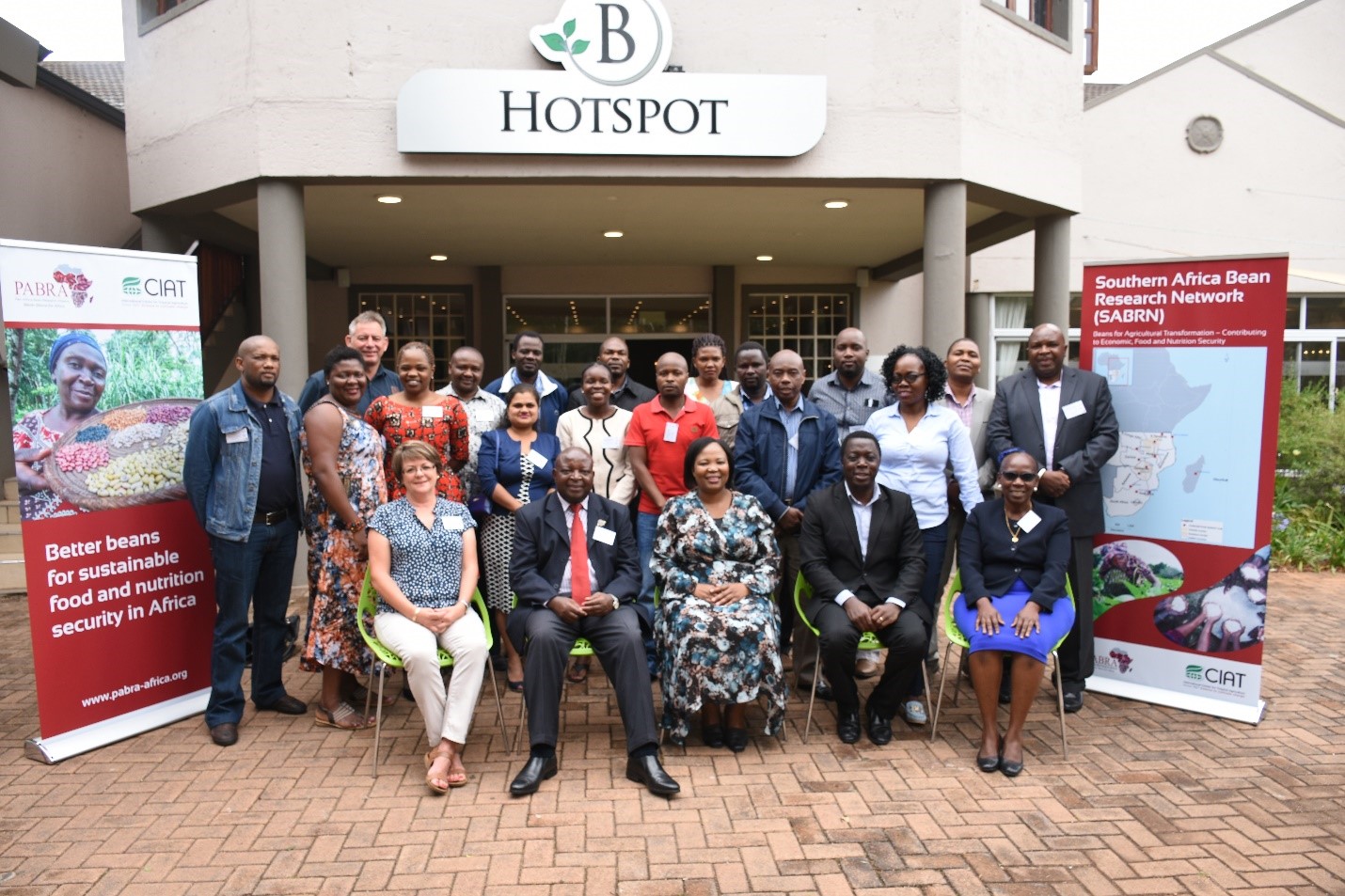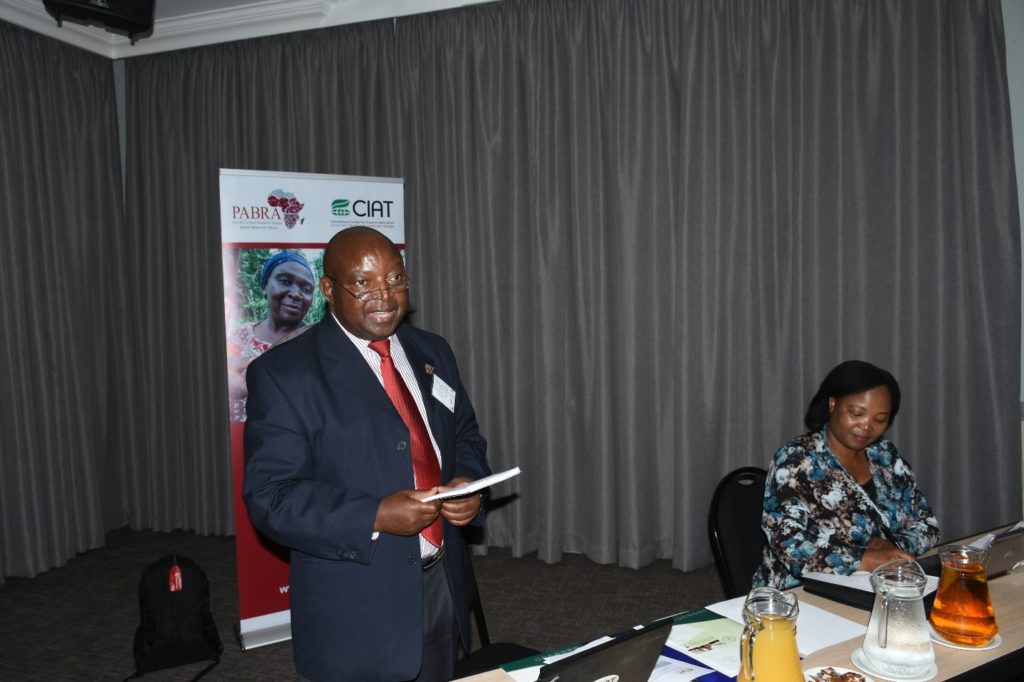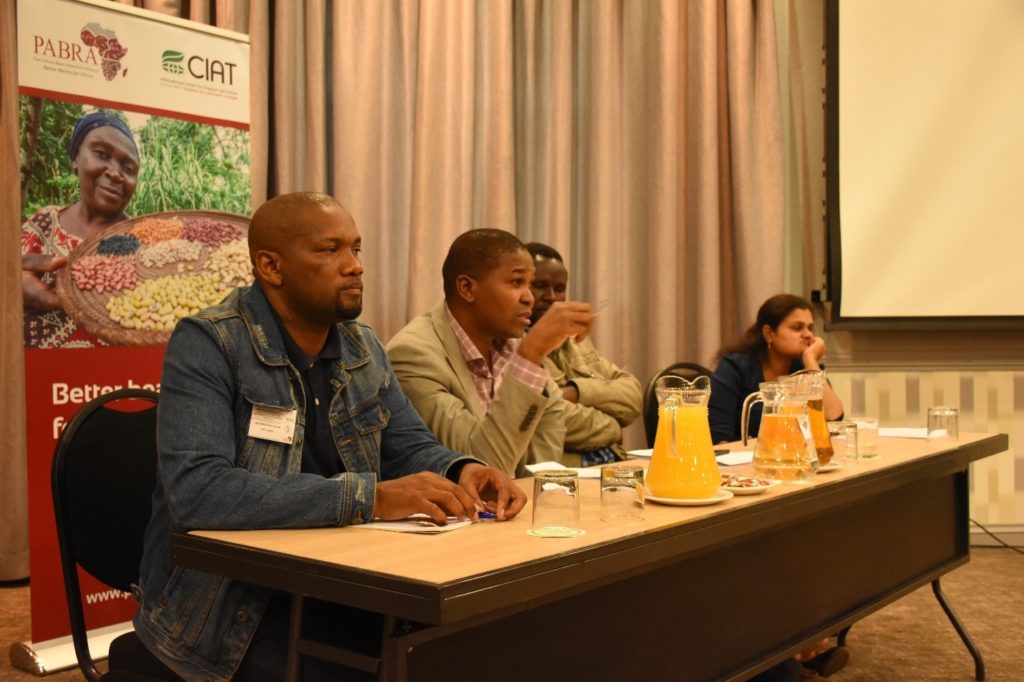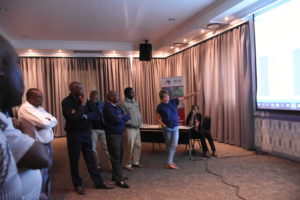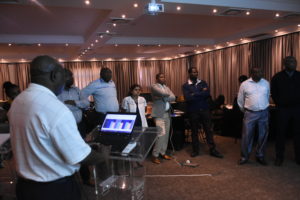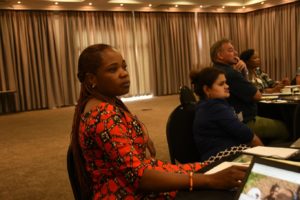The Pan African Bean Research Alliance (PABRA), is a consortium of three regional bean research networks; East & Central Africa Bean Research Network (ECABREN), West Africa Bean Research Network (WECABREN) and Southern Africa Bean Research Network (SABRN) covering about 30 countries in Africa.
SABRN held its 38th steering committee meeting from 6 – 8 November 2018 in Johannesburg, South Africa. This meeting, co-hosted by Grain Crops Institute (GCI) of the Agricultural Research Council (ARC) and the International Center for Tropical Agriculture (CIAT), brought together bean coordinators from 11 National Agricultural Research Organizations in Angola, Botswana, Eswatini, Lesotho, Malawi, Mauritius, Mozambique, South Africa, Tanzania, Zambia and Zimbabwe. Also present were representatives of the private sector in the bean value chain including traders, processors and a youth group. The meeting was officially opened by Dr. Nthabiseng Motete, Group Executive – Crop Sciences at the Agricultural Research Council (ARC).
In her opening speech, Dr. Motete lauded the great work that the partnership between Pan Africa Bean Research Alliance through the SABRN network has yielded thus far. ‘ARC is charged with the dual mandate to i) continue to develop technologies that provide high-level agricultural solutions as required by the Science Council and ii) inform policy through the Department of Agriculture, Forestry and Fisheries (DAFF). We endeavor to set long-term research and development goals tailored to the needs of society and agriculture as a whole,’’ she said.
“We are in the process of developing ARC’s Vision 2050 that will be aligned to South Africa’s National Development Plan of 2030 Action plan. The 2050-plan acknowledges the commercial value of agricultural solutions; particularly for dry bean. We envision a boost in the industry especially around cultivars and scientific solutions that respond to the varying climatic conditions in Southern Africa. We have marked timelines of between 10-15 years of developing such technologies and ensuring that these reach our farmers in a timely manner. To achieve that, we need partners; ARC is therefore, open for business and collaboration.” she added.
Dr. Motete invited all the participants to visit the Biotechnology Platform at which houses the breeding management system (BMS) at ARC – Pretoria campus. The dream is for such platforms to foster collaborations and encourage data sharing. ARC’s collaboration with CIAT should not only be limited to the dry bean, but wide range of crops. For instance, the ARC is working on cassava not only as an industrial crop but as a food crop too, hence the need for collaborative platforms with international research centers for such crops.
Following the official opening, Dr. Rowland Chirwa, the SABRN Coordinator, urged the participants to actively share their country highlights for the three days of the meeting. Top of the agenda was taking stock of 2018 that was coming to an end and and planning activities for the year 2019/20.
Among the highlights of the year was the launch of a new project which is implemented through PABRA; Technologies for Agricultural Transformation (TAAT), that is promoting high iron beans (HIB) for improved food, nutrition, and incomes. From SABRN, Malawi, Tanzania and Zimbabwe are the three out of a total of eight countries implementing TAAT-HIB, To further support TAAT-HIB, three more HIB varieties were released in Tanzania (Selian 14 and Selian 15) and Zimbabwe (NUA674). Furthermore, Zimbabwe also released a white pea bean variety ‘Protea’ which will save the country’s bean canning industry hundreds of millions of dollars per year in grain import substitution. Bean business around the bean commodity corridor platforms is opening up and progress has been great; Zambia & Zimbabwe platforms have been very active with bean trade taking place among the various actors (mostly bean producers and aggregators). With Malawi adding 10 new bean varieties in 2018, the prospect of farmers getting varieties of their choice becomes closer to reality than ever. “Overall, a lot of progress was made in the year,” remarked Dr. Chirwa.
Echoing similar sentiments, Christian Frederik of the Dry Bean Producers’ Organization shared long time statistics that showed that bean consumption demand is rising faster than increase in production. Adding on to private sector perspective, Patience Mukweza, Head of Research & Development at CAIRNS Foods Limited, a bean canning company in Zimbabwe highlighted how positioning biofortified crops such as HIB is a key puzzle piece to addressing micronutrient deficiencies. “As a company, we want to increase bean uptake in line with the National Fortification Strategy to address zinc and iron deficiencies in Zimbabwe,” she solemnly declared.
Meanwhile, bean trade is no ‘bed of roses,’ a number of challenges abound. The biggest of them all being climate variability and its impact on yield, pricing and overall bean trade. Equally challenging is the quality of grain delivered to processors, especially grain imported from other African countries. The grain is often ‘out of spec’ and requires further handling before it can be used by the industry. This has been attributed to non-reputable sources of seed and lack of seed quality standardization. SABRN as network endeavors to better bean seed systems.
What matters to consumers
For the bean industry, most of the drivers for production of any particular bean type is the market/ consumer preference. Production starts with the market in mind. Overall feedback from consumers reveals that most consumers are interested in varieties with shorter cooking time & cost, its nutrient content, the palatability, and the serving diversity and convenience.
Demand for bean is growing and this is an opportunity to explore the markets. The private sector partners had some key recommendations on understanding the factors that limit production and counter these with bean varieties that are adaptable, adopt good agricultural practices that enhance productivity. Also ensure that continued dialogue within the value chain from the producers to the consumers is critical to align the needs and expectations of the various players.

